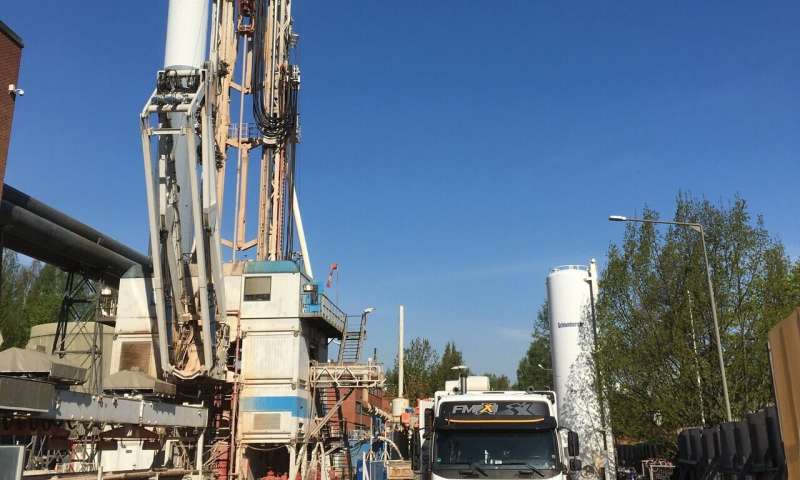Injection strategies are crucial for geothermal projects

The fear of earthquakes is one of the main reasons for reservations about geothermal energy. In order to get hot water from the depths, crevices in the rock underground often have to be created. This is done by injecting large quantities of water under high pressure. The problem is that such hydraulic stimulation is accompanied by vibrations underground, known as 'induced seismicity.' A new study points a way that could help to reduce seismic risk.
Geothermal energy with its significant baseload capacity has long been investigated as a potential complement and long-term replacement for traditional fossil fuels in electricity and heat production. In order to develop deep geothermal reservoirs where there are not enough natural fluid pathways, the formation needs to be hydraulically stimulated. Creation of so called enhanced geothermal systems (EGS) opens fluid flow paths by injecting large quantities of water at elevated pressures. This is typically accompanied by induced seismicity. Some especially large induced earthquakes have led to the termination or suspension of several EGS projects in Europe, such as the deep heat mining projects in Basel and in St. Gallen, both in Switzerland. Recently, the occurrence of a MW 5.5 earthquake in 2017 near Pohang, South Korea, has been linked to a nearby EGS project. As such, there now exists substantial public concern about EGS projects in densely populated areas. Developing new coupled monitoring and injection strategies to minimize seismic risk is therefore key to safe development of urban geothermal resources and to restore public faith in this clean and renewable energy.
In a new study published in Geophysical Research Letters, Bentz and co-workers analyzed the temporal evolution of seismicity and the growth of maximum observed moment magnitudes for a range of past and present stimulation projects. Their results show that the majority of the stimulation campaigns investigated reveal a clear linear relation between injected fluid volume or hydraulic energy and the cumulative seismic moments. For most projects studied, the observations are in good agreement with existing physical models that predict a relation between injected fluid volume and maximum seismic moment of induced events. This suggests that seismicity in most cases results from a stable, pressure-controlled rupture process, at least for an extended injection period. This means that induced seismicity and magnitudes could be managed by changes in injection strategy.
Stimulations that reveal unbound increases in seismic moment suggest that in these cases evolution of seismicity is mainly controlled by regional tectonics. During injection a pressure-controlled rupture may become unstable, with the maximum expected magnitude then being only limited by the size of tectonic faults and fault connectivity. Close near-real-time monitoring of the seismic moment evolution with injected fluid could help to identify stress-controlled stimulations at the early stages of injection or potentially diagnose critical changes in the stimulated system during injection for an immediate reaction in stimulation strategy.
More information: Stephan Bentz et al, Seismic Moment Evolution During Hydraulic Stimulations, Geophysical Research Letters (2020). DOI: 10.1029/2019GL086185
Journal information: Geophysical Research Letters
Provided by Helmholtz Association of German Research Centres















